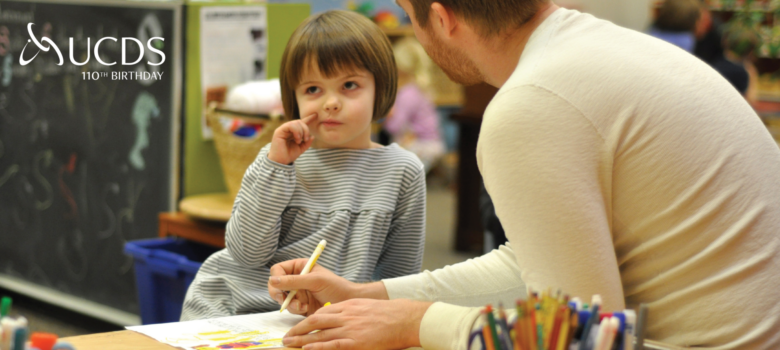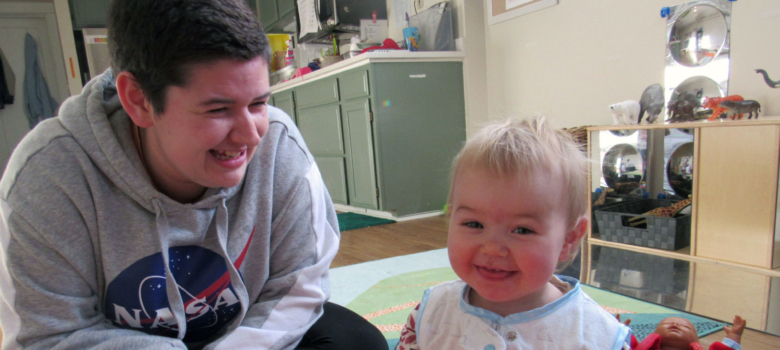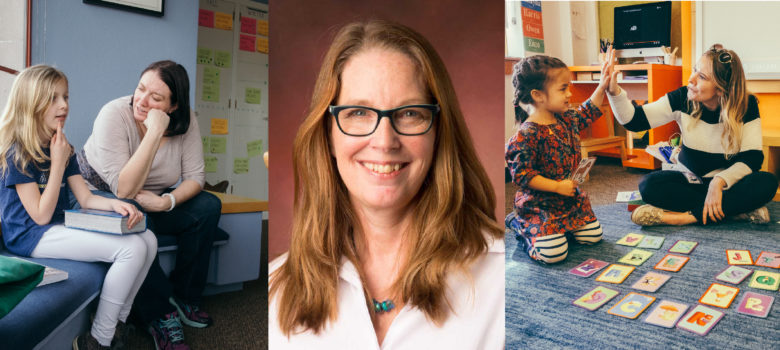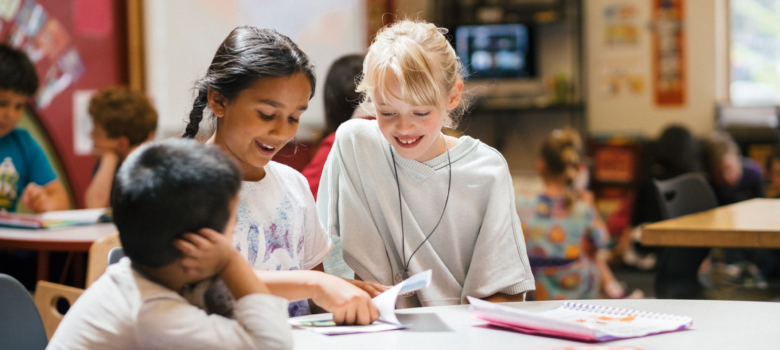Resident Early Elementary Teacher Laurel’s third post for the Spark Blog contains her thoughts on attending the Day of Dialogue Conference, a Reggio Emilia inspired gathering held annually in Seattle. -Ed.
__________
This November I attended The Day of Dialogue Conference where I spent the day learning and reflecting on my goals as a teacher and as a resident at UCDS. The conference created a space for attendees to build a community around them while digging deep into topics of their choice surrounding early elementary education. After attending the conference, I reflected on a topic that we focused on as a large group during the opening remarks and a session that I attended about connecting children to the natural world. Both of these conversations were built around our values and assumptions surrounding outdoor play, setting up open-ended play and activities, and how to engage with students as they are exploring.
Setting up outdoor open-ended play with a plan is essential to creating successful experiences for your students. What materials do you want to use, what space do you have, and how much time for exploring? These questions will help guide you as you plan your outdoor open-ended play. One example that we talked about during the session was using tires as your material. Going back to the plan and assessing how to set-up this space is key. The outdoor space was set up with multiple tires, in a fenced in area, with plenty of space and time for movement, creativity, problem solving, and accomplishment.
The space is set for children to get involved, making sure that there is ample time for students to experiment, and giving them the freedom to explore on their own. We talked about ways that teachers can engage with their students, at the onset, during, and following play. Strategies such as narrating and raising questions can sometimes steer students in a different direction, or potentially be disruptive while the students are busy in their play or plan. We talked about reflective strategies following play, and waiting for students to engage with you. Ideas as simple as observing students during play and finding our own comfortability with their struggle (not jumping in to help) as they learn to problem solve and accomplish a task independently.
As a teacher observing these moments is exciting and informative, as you watch students guide their way through outdoor open-ended play.




